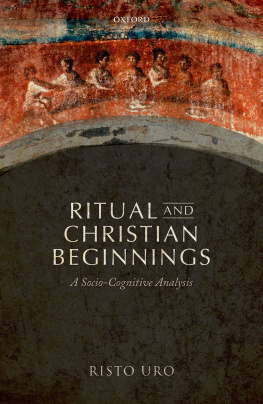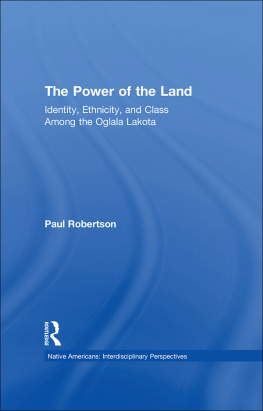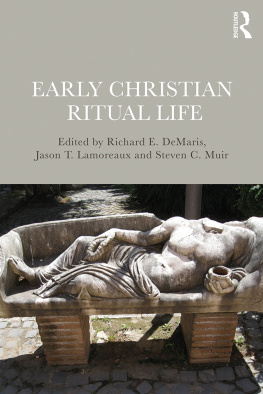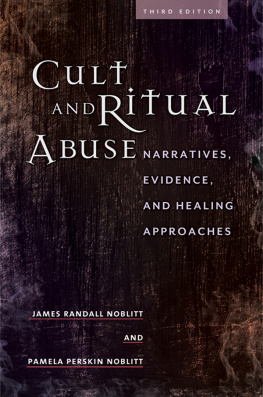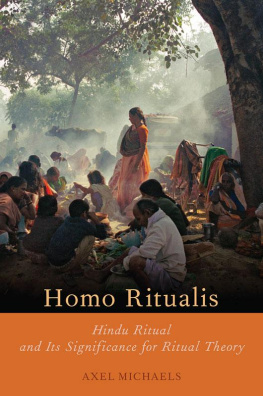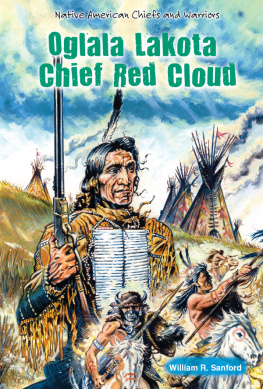James R. Walker - Lakota Belief and Ritual
Here you can read online James R. Walker - Lakota Belief and Ritual full text of the book (entire story) in english for free. Download pdf and epub, get meaning, cover and reviews about this ebook. year: 2014, publisher: Nebraska, genre: Religion. Description of the work, (preface) as well as reviews are available. Best literature library LitArk.com created for fans of good reading and offers a wide selection of genres:
Romance novel
Science fiction
Adventure
Detective
Science
History
Home and family
Prose
Art
Politics
Computer
Non-fiction
Religion
Business
Children
Humor
Choose a favorite category and find really read worthwhile books. Enjoy immersion in the world of imagination, feel the emotions of the characters or learn something new for yourself, make an fascinating discovery.
- Book:Lakota Belief and Ritual
- Author:
- Publisher:Nebraska
- Genre:
- Year:2014
- Rating:4 / 5
- Favourites:Add to favourites
- Your mark:
- 80
- 1
- 2
- 3
- 4
- 5
Lakota Belief and Ritual: summary, description and annotation
We offer to read an annotation, description, summary or preface (depends on what the author of the book "Lakota Belief and Ritual" wrote himself). If you haven't found the necessary information about the book — write in the comments, we will try to find it.
The real value of Lakota Belief and Ritual is that it provides raw narratives without any pretension of synthesis or analysis, as well as insightful biographical information on the man who contributed more than any other individual to our understanding of early Oglala ritual and belief.Plains Anthropologist
Lakota Belief and Ritual — read online for free the complete book (whole text) full work
Below is the text of the book, divided by pages. System saving the place of the last page read, allows you to conveniently read the book "Lakota Belief and Ritual" online for free, without having to search again every time where you left off. Put a bookmark, and you can go to the page where you finished reading at any time.
Font size:
Interval:
Bookmark:


Copyright 1980, 1991 by the University of Nebraska Press
All rights reserved
Library of Congress Cataloging-in-Publication Data
Walker, J. R. (James R.). b. 1849
Lakota belief and ritual / James R. Walker: edited by Raymond J. DeMallie and Elaine A. Jahner.
p. cm.
Includes bibliographical references and index.
ISBN-13: 978-0-8032-9731-9 (paper: alk. paper)
ISBN-13: 978-0-8032-9886-6 (electronic: e-pub)
ISBN-13: 978-0-8032-9887-3 (electronic: mobi)
I. Oglala IndiansReligion and mythology. 2. Oglala IndiansRites and ceremonies. I. DeMallie, Raymond J., 1946. II. Jahner, Elaine, 1942. III. Title.
E99.03W17 1991
299.785dc20
91-15037 CIP
The publisher does not have any control over and does not assume any responsibility for author or third-party websites or their content
List of Illustrations
Black and white photographs
following p. 66
James Riley Walker
James R. Walker and Red Cloud
Red Cloud
Little Wound
George Sword
Afraid of Bear
American Horse
Thunder Bear
following p. 130
Rocky Bear
Red Hawk
Thomas Tyon
No Flesh
Short Bull and Joseph Horn Cloud
William Garnett, Charles Ash Bates, and American Horse
Group from Pine Ridge at Rodman Wanamakers Last Great Indian Council
Blue Horse
following p. 194
Pine Ridge Agency, ca. 1900
Pine Ridge Agency, co. 1909
Dancing at Pine Ridge
Painting a Hide
Lakota Homes on Lower Medicine Root Creek
Before Entering the Sweat Lodge
Sweat Lodge with Cover Raised
Just Out of the Sweat Lodge
Sun Dance Lodge at Pine Ridge
Council or Ceremonial Lodge at Pine Ridge
Bringing the Buffalo Skull for the Hunka Altar
The Altar Completed
Omaha Dancers
Color plates
following p. 226
The Third Day of the Sun Dance
The Fourth Day of the Sun Dance
Kit Fox Society Leader
Holy Bow Carrier, a Cheyenne
War Party Leader
Striped Warbonnet, a Cheyenne
A Man Who Killed an Enemy
A Man Who Killed Two Enemies
Leader of the Beaver Society
A Heyoka Warrior
A Scout
Lance Bearer of the Sotka Society
Lance Bearer of the Otter Society
A Heyoka Warrior
Lance Bearer of the Brave Society
Leader of the Sotka Society
Preface
Today more than ever before, people are trying to understand both their own and others traditions; they are learning to appreciate that each way of life has its own value and particular capacity to tap the creative resources of human consciousness. As people the world over seek to learn about the many ways in which others have related to their immediate and to their cosmic environment, they are turning toward American Indian tribal traditions. They are listening to tribal wisdom that has survived in oral tradition and are seeking those documents that record accurately past ways of thinking and relating. Part of the worlds heritage of authentic documents is the famous but until now almost inaccessible James R. Walker collection of traditional Lakota knowledge. The collection records teachings by men whose statements of belief show the energy, depth, and imaginative intensity characteristic of the Lakota response to specific cultural, social, and ecological challenges.
James R. Walker spent eighteen years in South Dakota as agency physician on the Pine Ridge Reservation, the home of the Oglala Sioux. From 1896 until 1914, he collected material relating to almost every facet of the old Lakota way of life. He also arranged to have Lakota people write for him and conduct interviews. The creation of a record of the spiritual and philosophical bases of the buffalo-hunting way of life became a quest for Walker. Beginning as a total outsider to the Oglalas, through his medical work and his expression of interest in the traditional ways he eventually became a trusted friend.
The old men at Pine Ridge instructed Walker in their traditional religion, first of all, because, in the words of George Sword, the Gods of the Oglala would be more pleased if the holy men told of them so that they might be kept in remembrance and all the world might know of them. The collective decision to instruct Walker as a Lakota holy man was not made without consulting the gods themselves; Walker recorded that first Little Wound sought a vision and then the other holy men agreed to abide by his decision. Only after this did they begin to instruct Walker in the sacred things that were not common knowledge.
The holy men who instructed Walker included some of the most famous and influential old men of the reservation. Besides Sword and Little Wound (who claimed the position of head chief of the Oglalas) there were American Horse, Red Cloud, Bad Wound, and No Flesh, all important leaders. There were also shamans like Ringing Shield, Finger, and Red Hawk. Particularly important was Thomas Tyon, a mixed-blood whom the holy men trusted and who frequently served as Walkers interpreter.
In his studies with the old men, Walker attempted to reach into the past to describe Lakota religion before the introduction of Christian religions to the Oglalas. He himself published a summary of his studies in his 1917 monograph The Sun Dance and Other Ceremonies of the Oglala Division of the Teton Dakota , the distillation of two decades work. But today much of our interest is in the actual statements by individual Lakotas upon which Walker based his own interpretations. We can learn facts from Walkers summaries, but we need the actual statements of individuals to help us understand how influential members of the tribe understood those facts and related them to changing circumstances.
This volume is the first of four that will present the best and most important portions of the hundreds of pages of notes, interviews, texts, and essays that James R. Walker amassed during his eighteen years at Pine Ridge Reservation. Among them, these books will present the previously unpublished interview notes taken by Walker in his work with the Oglalas. Each volume is unique. The first, after giving biographical details on Walker, is concerned with beliefs that form the foundation for the Lakota way of life. It includes material on religion, ritual, and warfare. The second volume will concern Lakota myth, in which the fundamental moral concepts of the culture are embodied. The third volume will deal with Lakota social organization, concepts of time and history, and winter counts. The fourth volume will present a translation of the writings of George Sword, Oglala warrior, later agency policeman and judge of the Court of Indian Offenses at Pine Ridge. At Walkers request, Sword wrote an extensive record of all aspects of the traditional way of life, from religion and myth to ritual, warfare, and even games. And to introduce himself, he wrote an autobiography. Thus the first three volumes are thematic, while the fourth examines the totality of Lakota life from the perspective of a single individual. It must be stressed that these publications supplement Walkers Sun Dance rather than supersede it. In addition to providing his own synthesis of Oglala religion, that work is important because it reproduces verbatim some valuable texts and interviews, which are not reprinted in the present volumes.
Over the years, Walkers Sun Dance has become a classic, a key work for understanding the traditional Lakota way of life. In preparing his monograph, Walker did not approach the sun dance ceremony in isolation, but used it as the focus around which to synthesize the fundamentals of Lakota religion. He wrote and published under the rubric of anthropology even though he himself had no formal training in that discipline. At the turn of the century it was only among anthropologists and folklorists that there was serious scholarly interest in recording the religions of native American groups. Walker clearly felt that he was making a contribution to the science of anthropology, not to the field of religion, philosophy, or literature. His interest was in describing the religion of the Lakotas as though it were written by a Lakota who was at home in the English language and versed in scholarship. He strove for objectivity, attempting to get each statement verified by several of the old men, synthesizing their information, and seeking their final approval of his work.
Font size:
Interval:
Bookmark:
Similar books «Lakota Belief and Ritual»
Look at similar books to Lakota Belief and Ritual. We have selected literature similar in name and meaning in the hope of providing readers with more options to find new, interesting, not yet read works.
Discussion, reviews of the book Lakota Belief and Ritual and just readers' own opinions. Leave your comments, write what you think about the work, its meaning or the main characters. Specify what exactly you liked and what you didn't like, and why you think so.




